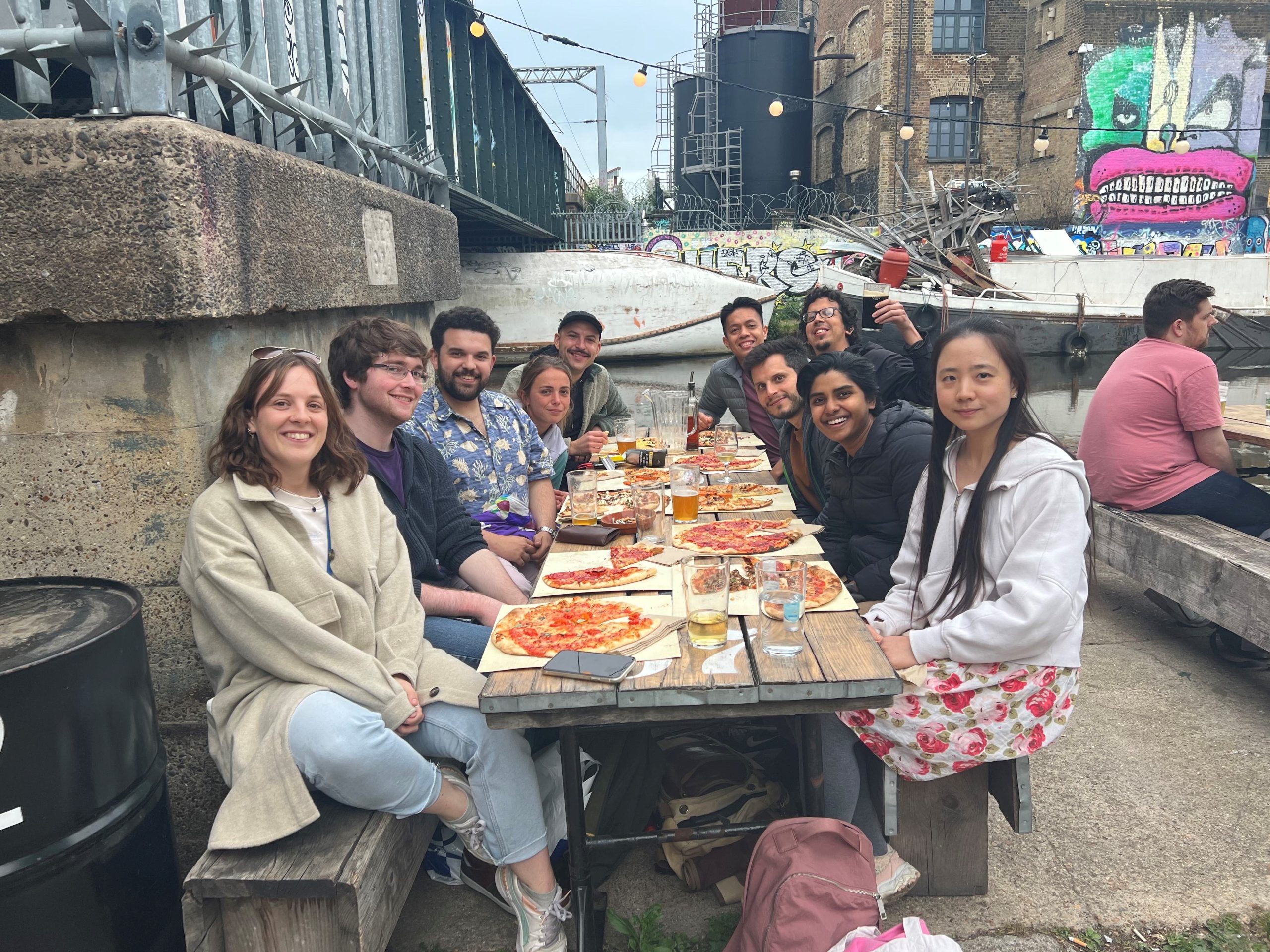Lab meeting with the Martín-Durán lab
Posted by the Node, on 11 September 2023
Where is the lab?
We are based in east London, at Queen Mary University of London, in the United Kingdom.
Lab website: Martin-Duran Lab (martinduranlab.com)
Research summary
We want to understand how development is controlled and evolves to generate new phenotypes. To answer this, we study segmented worms (annelids) with spiral cleavage, a unique and ancient mode of development found in many marine invertebrates. We are interested in discovering how different strategies to specify the early progenitors of all cell types and organs of an animal evolved in spiral cleavage and how changes in the timing and maternal contribution defining those cells might influence phenotypic evolution during subsequent development, such as in the adult morphology and the life cycles. We approach these questions by combining multiple methodologies, from genomics, epigenomics and transcriptomics to more classical embryology, and using non-model organisms, some of which we are establishing as tractable research species for the first time.
Can you give us a lab roll call?
Currently, there are two postdoctoral (Yan Liang and Allan Carrillo-Baltodano) and four postgraduate researchers (Kero Guynes, Francisco Manuel Martín-Zamora, Rory Donnellan and Billie Davis) in my lab.
Yan studies the dynamics of gene expression and regulation during spiral cleavage and their correlation with the evolution of different life cycles and cell fate specification strategies.
Allan works on the evolution of maternal determinants and early cleavage in the specification of the body axes.
Kero investigates the role of DNA methylation during spiral cleavage and in annelids.
Fran has spearheaded the study of gene regulation and histone post-translational modifications during annelid embryogenesis and spiral cleavage.
Rory is investigating the regeneration of anterior structures in our favourite annelid, Owenia fusiformis.
Billie is exploring the evolution and role of 3D genome architecture in annelids and spiral cleavage.

Favourite technique, and why?
Chema: My favourite technique is in situ hybridisation because I love to see where genes are expressed. But I’m sure each member of the lab has their own!
Apart from your own research, what are you most excited about in developmental and stem cell biology?
Chema: I love evolutionary and comparative developmental biology generally. But I am particularly interested in the embryology of weird and understudied creatures, what they can tell us about animal development, and the evolution of the fascinating diversity of animal forms.
How do you approach managing your group and all the different tasks required in your job?
Chema: I like to support and train the members of my lab to become independent and have a sense of ownership of their projects. This is essential to stay motivated and willing to discover new things, even during the challenging moments in every research project. Efficient time management and ensuring time for hobbies, friends, and family is the key!
What is the best thing about where you work?
Chema: Queen Mary and the Department of Biology is a diverse and collegial environment. People work on many different organisms and questions, from plants and microbes to bats and fossils. That is very stimulating! It helps you learn something new daily and think about your interests and problems from new perspectives.
Allan: The community in the biology department at QMUL is very strong. Most postdocs initially come without a sense of what to do in a big, diverse city like London. However, the PhD students, in particular, make everyone welcome, and soon enough, you cannot skip a pub night on Fridays. The informal settings allow for a natural discussion of things that can help in our research and careers.
What’s there to do outside of the lab?
Chema: We are in East London! It is one of London’s most vibrant, diverse, young, and exciting parts.
Allan: London has everything you can imagine, but the music scene is excellent. From small bohemian venues to listen to folk music to mega stadiums to see your favourite rock band. There is something for everyone.
Browse through other ‘Lab meeting’ posts featuring developmental and stem cell biology labs around the world.


 (1 votes)
(1 votes)